






Want to know a bit more about Vieques?
Here’s a brief timeline to whet the appetite of the history buff in you.
J 2145 BCE findings in Puerto Ferro date back to Pre-Arawak period.
J 1100 CE abounds in Esperanza.
J 1493 the south side of Borinquen (now Puerto Rico) and claims it for Spain.

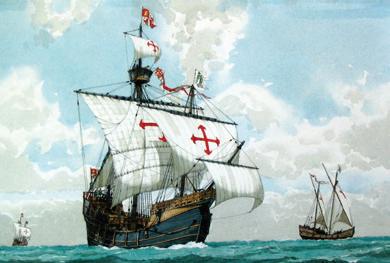
J 1508 Ponce de León initiates colonization of Puerto Rico.
J 1514 Taíno Chiefs Yaureibo and Cacimar from Bieke fight Spanish forces on the east side of Puerto Rico.
J 1683 British settlers from Anguilla invade Vieques. Danish forces from St. Thomas drive invaders away.
J 1698 Scottish settlers from Nevis, Anguilla and Tortola invade Vieques. Spanish forces drive invaders away.
J 1718 British settlers from Anguilla come to Vieques to establish a colony on two different occasions. Both times Spanish forces drive invaders away.
J 1811 The Spanish colonization of Vieques begins.
J 1815 Royal Decree of Graces allows other Europeans who swear loyalty to the Spanish Crown to remain in Puerto Rico. French settlers develop Vieques’ agrarian economy.
Simón Bolivar, Latin America’s Great Liberator, comes to Vieques.

The Spanish commence construction of a town, eventually called Punta Mulas (Isabel II today), on the north side of the island.
J 1832 Teófilo José Jaime María Le Guillou, a French emigre, is appointed military governor of Vieques.
J 1844 The municipality of Vieques is formally established; construction of original Catholic Church gets underway.
J 1845 Construction of Fortín Conde de Mirasol (the Fort) begins.
J 1863 Britain formally renounces all claims to Vieques.
J 1873 Abolition of slavery in Puerto Rico (March 22, 1873); Manuel E. Benitez is elected Vieques’ first mayor when municipalities are extended the right to vote.
J 1893 All Saints Church is officially consecrated. Vieques and Ponce were the first places in Puerto Rico under Spanish Monarchy allowed to set up non-Catholic churches.
J 1896 Punta Mulas lighthouse (north side) is completed.
J 1898 Spanish-American War. Treaty of Paris gives United States temporary control of Cuba and ownership of Puerto Rico, Guam and the Philippine islands.
J 1899 Puerto Ferro lighthouse (south side) is completed.
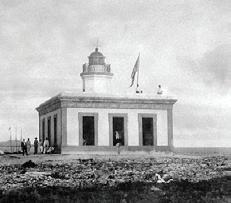
J 1917 Jones Act grants United States Citizenship to all Puerto Ricans.
J 1925 On March 19, a powerful earthquake causes major structural damages to the Puerto Ferro lighthouse. The lighthouse is closed.
J 1941-49 The United States Navy expropriates nearly two thirds of Vieques for military maneuvers.
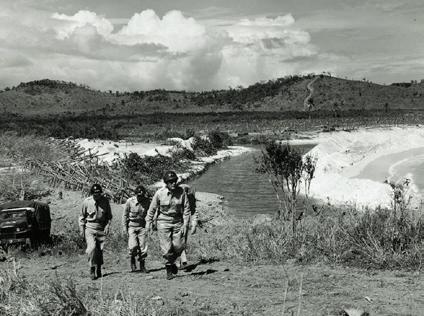
J 1948 Luis Muñoz Marín becomes 1st democratically elected governor of Puerto Rico.
J 1952 Commonwealth of Puerto Rico is established on July 25.
J 1961 The film Lord of the Flies is shot in Vieques.
J 1965 Osvaldo “Val” Gonzalez-Duriex provides air transportation to Vieques and registers his enterprise as Vieques Air Link.
J 1976 Water from El Yunque (Puerto Rico’s rain forest) via underwater pipeline becomes the main water supply for Vieques.
J 1977 - 1988 “Vieques Pony Express”— Ventura Camacho Dávila is hired by
the post office to initiate island-wide delivery of mail. For the next 11 years, Ventura Camacho does his job on horseback.

J 1978 “Fishermen’s War”: An international NATO backed training military exercise on Vieques is stopped by fishermen who position themselves in the direct line of fire.
J 1989 Hugo, since upgraded to a category 5 hurricane, devastates Vieques.
J 1991 Restoration of Fortín Conde de Mirasol is completed.
J 1999 David Sanes is killed by a bomb from U.S. Navy military exercises. The tragic death serves as the catalyst for a peace protest that galvanizes all of Puerto Rico. The ‘Paz Para Vieques’ movement garners international support and becomes instrumental in pressuring the United States Navy to end military exercises on the island.
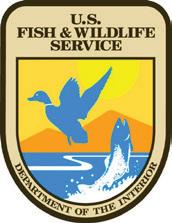
J 2001 Vieques National Wildlife Refuge is established (3,100 acres on the western end of Vieques).
J 2003 U.S. Navy leaves Vieques; 14,573 acres of land on the east end are added to the Vieques National Wildlife Refuge. The Refuge is operated under the U.S.
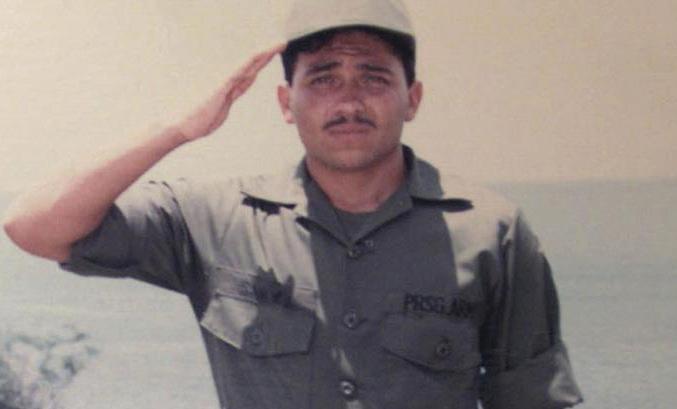
Department of Interior and becomes the largest wildlife refuge in the Caribbean.
J 2005 U.S. Congress designates parts of Vieques as a Superfund.
J 2006 Montessori Education arrives in Vieques; Guinness World Records names Mosquito Bay the brightest Bio-bay in the world; MANTA, the educational outreach program of the Vieques Conservation and Historical Trust (VCHT) wins EPA’s highest award two years in a row.
J 2007 Comunidad Verde Vieques is established. This is the first re-settlement inside former NAVY land.
J 2009 First Bio-luminescent Symposium in Puerto Rico is held in Vieques and hosted by the VCHT.
J 2011 White House report issued by the Vieques Task Force recommends military clean-up, a solid waste strategy, health care, renewable energy, protection of the BioBay and “green” tourism.
J 2016 VCHT signs an agreement with the Department of Environmental and Natural Resources to co-manage the Mosquito nature reserve.
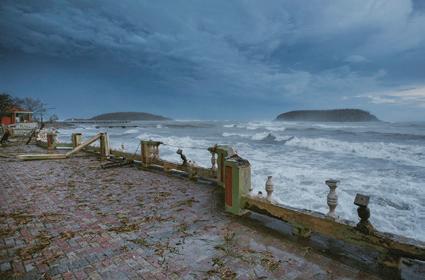
J 2017
Hurricane Maria devastates Puerto Rico and Vieques with Category 5-force winds. Communication to the outside world is severed, and it takes 7 months to restore power. Numerous on- and off-island organizations form to provide help.
J 2019 The death of 13-year old Jai Ventura sparks island-wide grief and a peaceful protest (justiceparajai) about the Vieques hospital. Destroyed in Hurricane Maria,

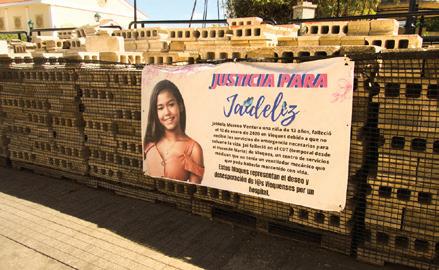
the hospital or CDT (Center for Diagnoses and Treatment) is in the process of being rebuilt.
J 2019 The Covid-19 pandemic magnifies the island’s humanitarian crisis after the devastation of Hurricane Maria and several earthquakes. Fortunately, response to the virus is rapid and thorough and controls the spread.
J 2019-20 Puerto Rico experiences an unprecedented series of shock swarms. Over 9,000 earthquakes and aftershocks damage thousands of homes and buildings and closes schools.
Six years later, Vieques continues to grapple with the lingering effects of Hurricane Maria, long after the storm left its devastating mark. Significant issues facing Vieques are the lack of medical services, insufficient ferry transportation, depleted economic opportunities and an education system afflicted by one challenge after another.
Additionally, Vieques, like many areas of the world, is experiencing the adverse effects of gentrification, leading to rising property prices and a displacement of long-time residents, threatening the unique cultural fabric of the island.
At press time, work on the hospital was getting underway by Caribe Techno, the company contracted to rebuild. Despite these challenges, resilient Vieques residents remain determined to rebuild their community and preserve their way of life while advocating for equitable development and the necessary resources for a sustainable recovery.
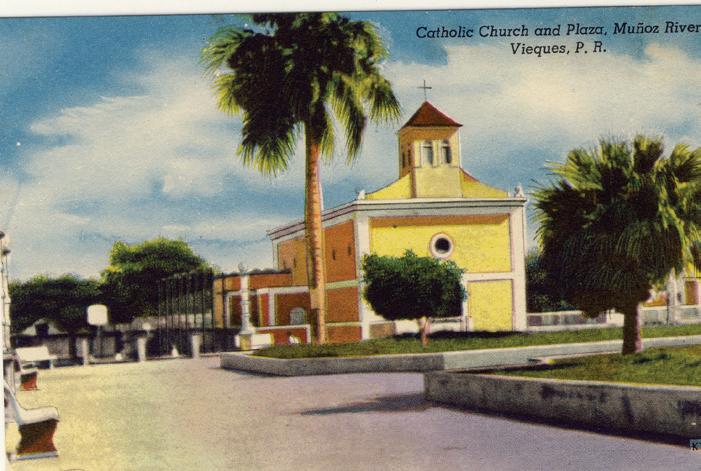
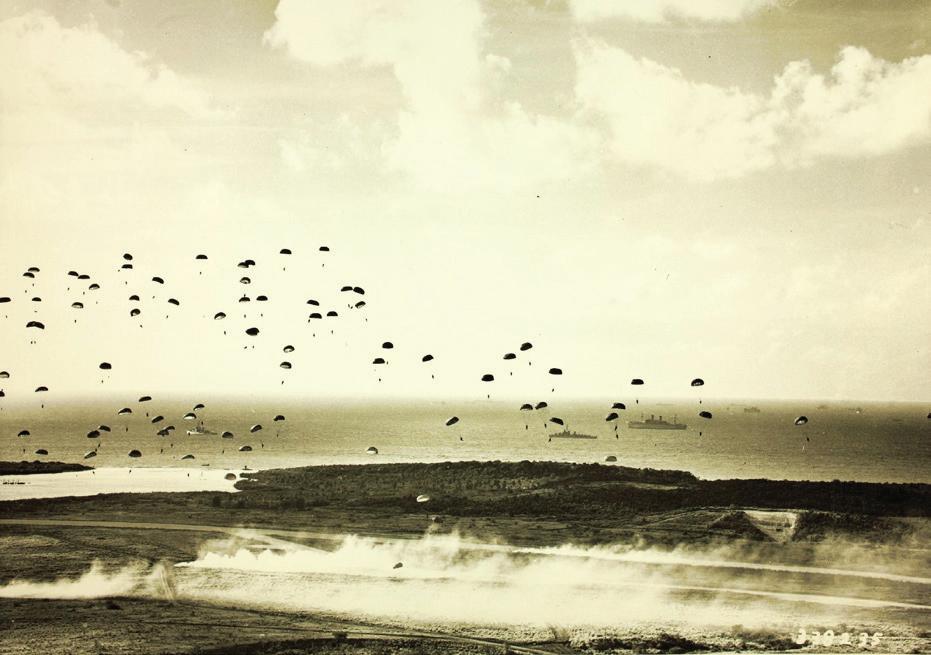
In 1950 a simulated attack on Blue Beach (La Chiva) was staged by a joint effort of Army, Navy, Air Force and Marine forces. The “D-Day”-like maneuvers took two months of preparation by land forces charged with protecting the beach and inland areas from the “assault”. As a result, the topography of La Chiva was substantially altered. Bulldozers scraped the land, digging deep anti-tank trenches and felling palm trees and bushes. Much of the thorny growth, mixed with barbed wire, was wrapped around the palm trunks as defensive barriers. A camouflaged, deeply-dug shelter for 50 caliber machine guns was also placed on the cayo off Blue Beach to disrupt the beach landing from behind.
Like many territories and cultures, Vieques has struggled to maintain its way of life. The many recorded histories of that struggle are, like the people of Vieques and Puerto Rico, filled with passion and persistence, and no shortage of perspectives. Vieques Insider endeavors to provide as accurate a timeline of that history as is available through our research, while taking into consideration the discrepancies that exist among historians. Our timeline is in no way a comprehensive account, only a brief outline. We encourage our readers seeking a greater knowledge of Vieques to access all accounts of its history. To discover more about Vieques locally, please visit El Fortín Conde Mirasol and the Vieques Conservation and Historical Trust
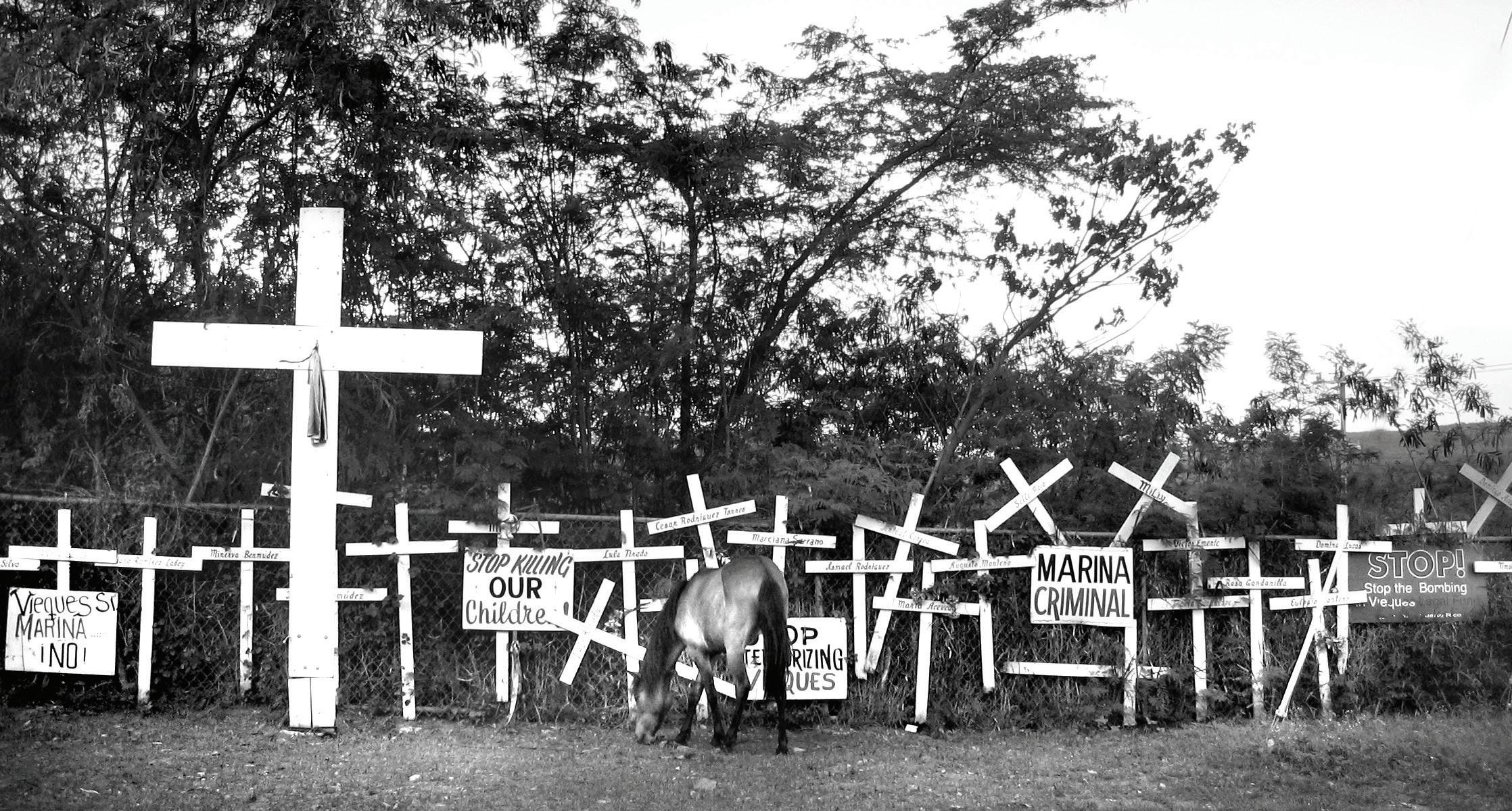
Vieques’ Ongoing Struggle for Health, Justice, and Environmental Restoration
Motivated by strategic military interests during World War II, the United States Navy took over two-thirds of Vieques (22,000 acres) to conduct wartime practices and weapons testing.
The expropriation process involved negotiation with some willing landowners but also employed eminent domain to forcefully acquire properties from those who resisted. Sugarcane operations, crucial to the Vieques economy, were not spared, leading to the displacement of numerous working families and significant changes in the island’s social fabric.
The U.S. Navy conducted a wide range of military exercises, including bombing practice, amphibious assault training, naval gunfire support, close air support, and weapons testing, causing significant environmental and health concerns among the local population. In 1999, the killing of a civilian security guard, David Sanes, led to widespread protests and international attention. Years of protests and negotiations ensued until the U.S. Navy officially ceased its military exercises on Vieques in 2003, ending its longstanding presence on the island.
have been working to address the environmental contamination left behind on the island by decades of military exercises, including unexploded ordnances and toxic substances, which pose significant health risks.
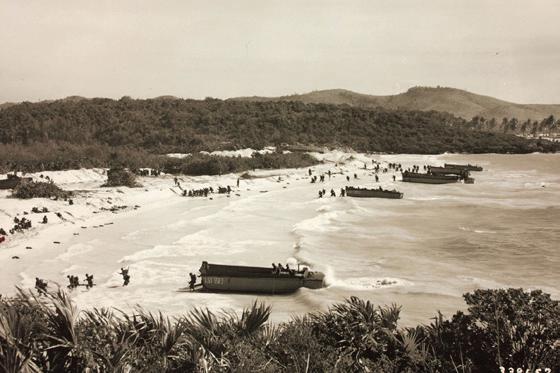
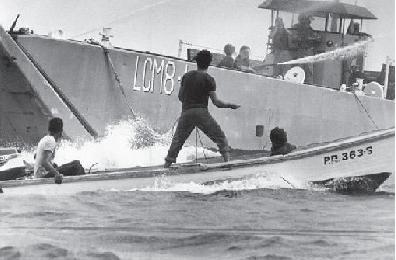
The departure of the U.S. Navy from Vieques marked the culmination of years of activism and efforts by the local community and environmentalists to reclaim the land.
In 2001, the U.S. Congress established the Vieques National Wildlife Refuge on the western end of the island. After 2003 and the Navy’s complete withdrawal from Vieques, the wildlife refuge added acreage on the eastern end, increasing it to approximately 18,000 acres of land. The Vieques National Wildlife Refuge is now home to a large collection of unique and stunning beaches that endlessly captivate visitors and locals alike, but much of the area and several beaches will remain closed to the public for years to come due to ongoing munitions removal.
In 2005 large areas of Vieques and surrounding waters wer place on the National Priorities List and since then the U.S. government and its various agencies (including the EPA)
Long after the U.S. Navy’s departure, residents of Vieques today continue to grapple with the legacy of military exercises on their island. One pressing concern is the alarmingly high cancer rates among the population, which many attribute to the years of exposure to hazardous materials and contaminants from military activities. The struggle for Vieques has shifted from protesting the Navy’s presence to demanding comprehensive healthcare support and environmental cleanup. Local activists, alongside environmental organizations and concerned citizens, continue their fight for adequate healthcare, environmental remediation, and social justice.
Faced now with increased property values and a rise in real estate prices, locals here, like elsewhere in the world, struggle with social and economic exclusion and displacement while continuing to advocate for the well-being and restoration of their land. n
To learn more about Vieques history, visit El Fortin Conde Mirasol. The Vieques Environmental Restoration Program (RAB) engages community members in a forum for information exchange. Download an application to join the RAB at www.navfac.navy.mil/Vieques.